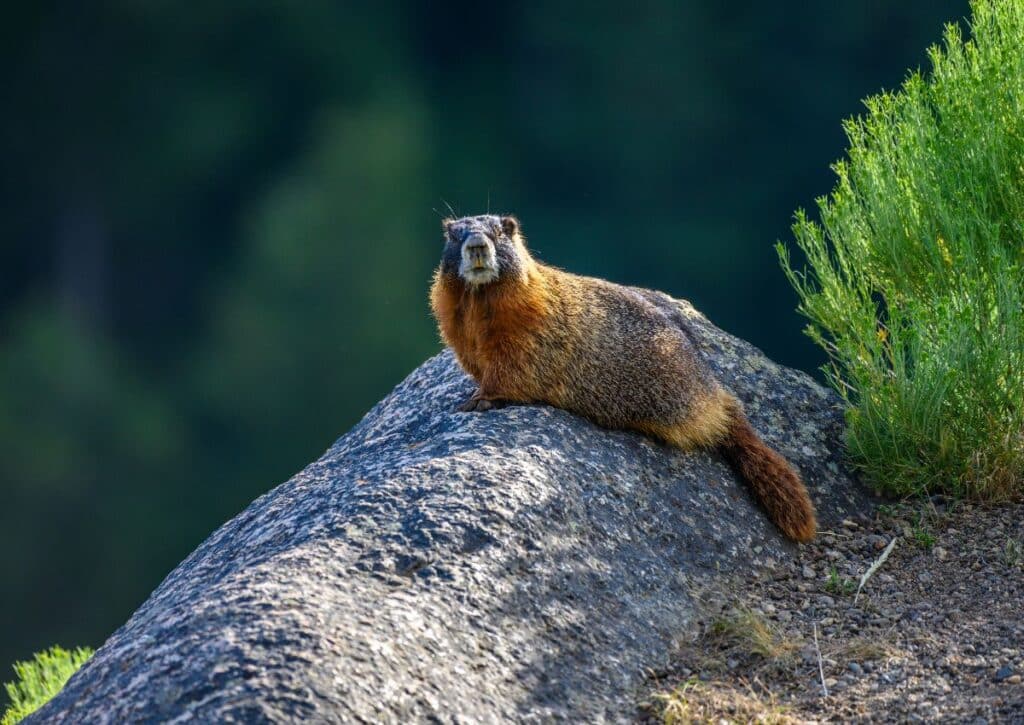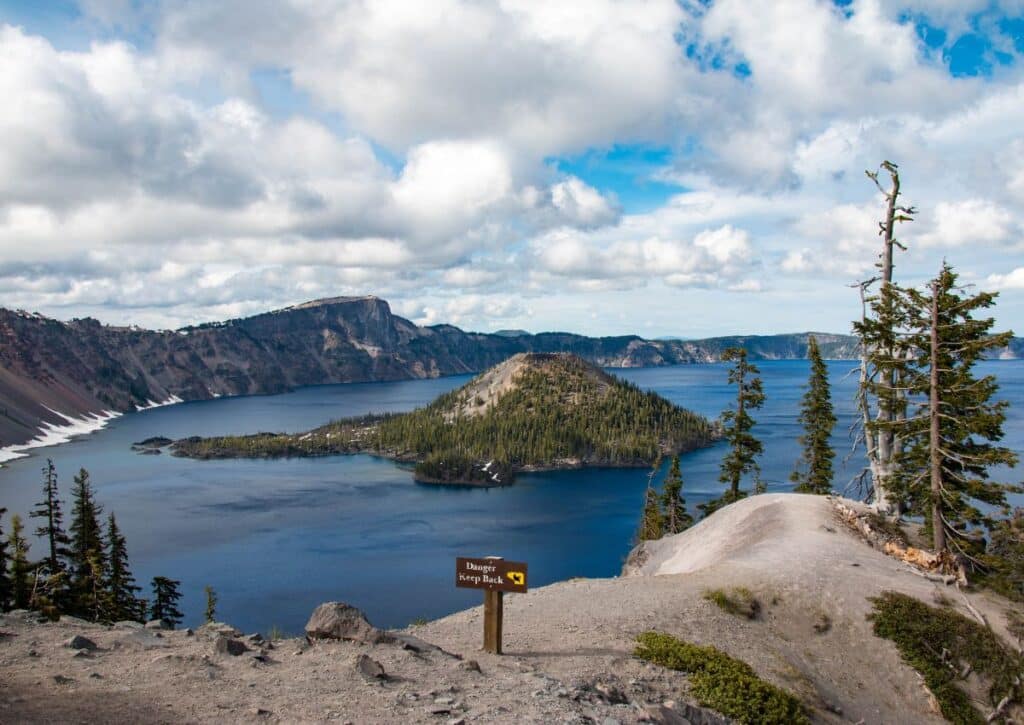We Saw 15 Animals in Crater Lake National Park. Learn about wildlife-rich trails, viewing tips, and ensure memorable, safe encounters.
Crater Lake National Park, located in Oregon, boasts a rich array of wildlife that complements its iconic blue waters. During our hikes through the park, we encountered a variety of animals, from grazing elk and black-tailed deer to the more elusive black bear and mountain lion.
In this article, we will detail our encounters with 15 distinct animals, offering insights into their habits and habitats. Furthermore, we’ll guide you through some of the park’s most wildlife-abundant trails and provide tips to enhance your own wildlife viewing experiences.
If you’ve ever been curious about the vibrant animal life in Crater Lake National Park, this is your comprehensive guide. Stay with us as we journey through the park’s fauna, one animal at a time.
15 Widlife Encounters in Crater Lake National Park
Crater Lake National Park is home to a diverse range of animals. As we hiked through different parts of the park, we came across various wildlife in their natural habitats. In the next section, we’ll highlight these encounters, detailing the animals we observed and where we spotted them. Join us on this tour of the park’s wildlife and discover where to find them.
Elk
Among the grandeur of Crater Lake National Park, the elk stand out with their imposing stature and impressive antlers. Males, known as bulls, display large branching antlers, while females, or cows, are antler-less but equally majestic.
Their rich brown coats contrast beautifully against the park’s lush greenery. As herbivores, they graze primarily on grasses, though they don’t shy away from shrubs, especially during winter.
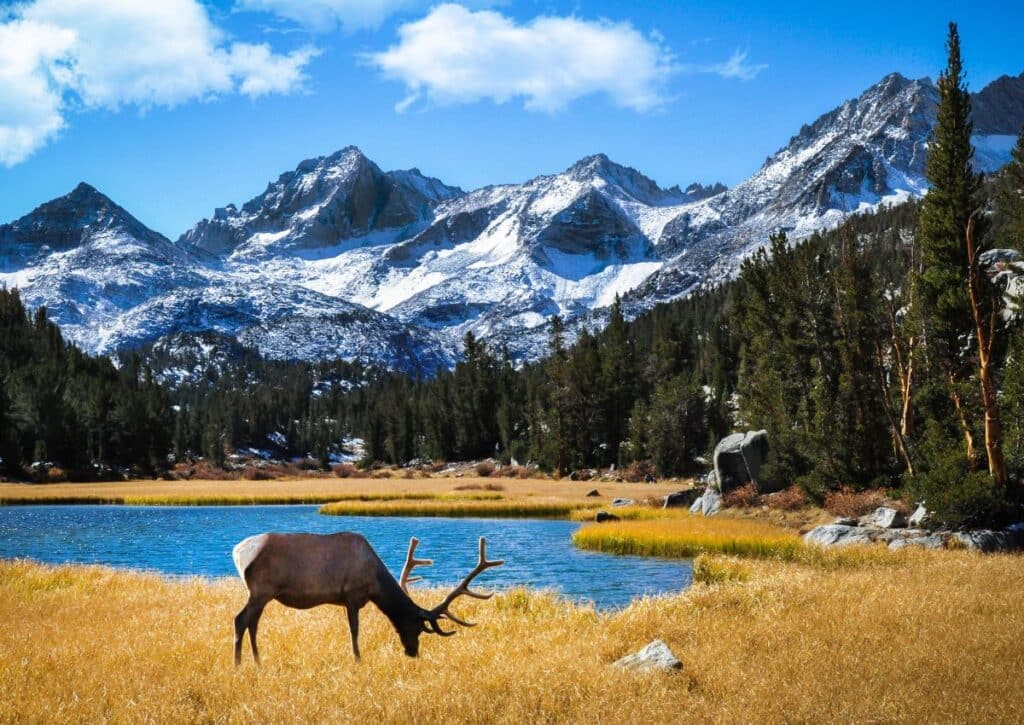
To see these magnificent creatures, your best bet is during early mornings or late afternoons when they’re most active. When it comes to specific trails, the Castle Crest Wildflower Trail, spanning about 0.8 miles, is a favorite among hikers for elk sightings. It’s a relatively flat trail adorned with seasonal wildflowers, making for a picturesque hike.
Another notable location is the vast Pumice Desert, a unique, flat landscape resulting from volcanic activity. While not exactly a trail, this expansive area, stretching roughly 2 miles across, offers a clear view, making it easier to spot herds, especially during their spring and fall migrations.
As always, when observing wildlife, maintain a respectful distance and tread lightly.
Mountain Lion
The mountain lion, often known as the cougar or puma, is one of Crater Lake National Park’s most elusive inhabitants. These large cats have a sleek, muscular body covered in a tawny coat, which aids in their camouflage amongst the park’s dense underbrush and rocky terrains.
Their powerful build, accompanied by a long tail, gives them an agility that’s unmatched, allowing them to be expert hunters. Mountain lions are carnivores, primarily preying on deer, but they’ll also consume smaller mammals when the opportunity arises.
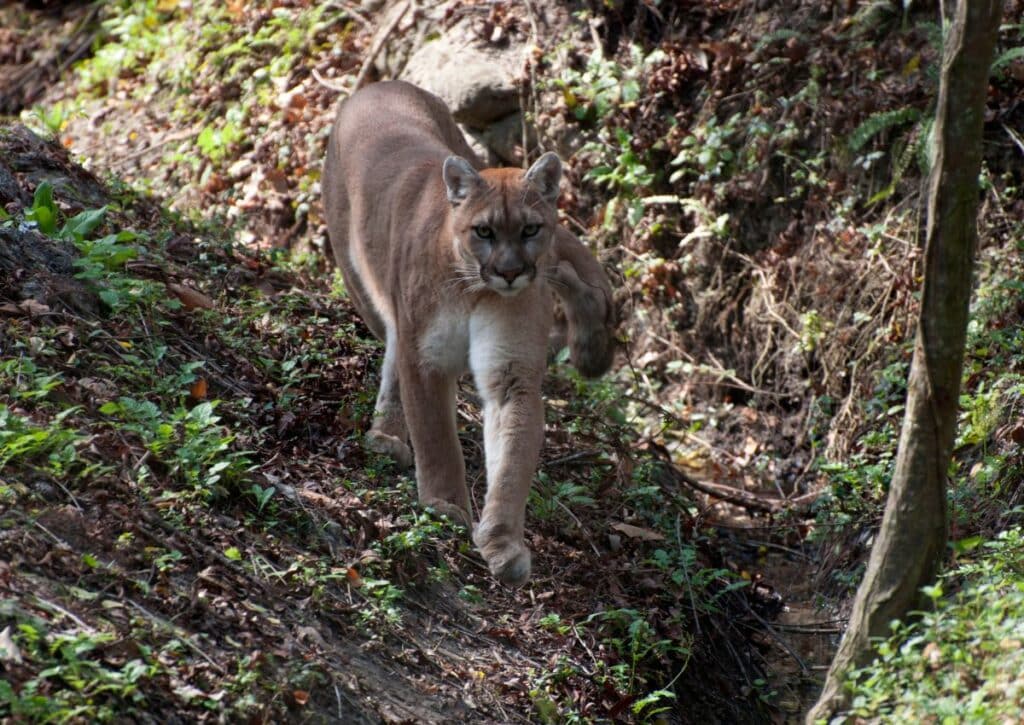
Spotting a mountain lion is rare and requires a bit of luck. Dusk and dawn are the times they’re most likely to be active, hunting or patrolling their vast territories. While they can roam throughout the park, some areas offer a higher chance of sightings.
The backcountry trails, especially those that wind through dense forests or rugged terrains, are where these cats often traverse. Specifically, the Pacific Crest Trail, which cuts through the park for approximately 33 miles, offers a wilderness experience where hikers have occasionally reported mountain lion signs or sightings.
It’s a challenging trail with varying elevations, giving a sense of the vast and wild habitat these majestic cats call home. If you do encounter one, it’s crucial to remember safety guidelines, including maintaining a distance and making yourself appear larger.
Black-tailed Deer
The black-tailed deer, a subspecies of mule deer, is a frequent and graceful presence in Crater Lake National Park. Recognizable by their medium size, these deer have a rich brown coat that turns grayer in the winter, and as their name suggests, a characteristic black tail.
Males, or bucks, can be identified during certain seasons by their branching antlers. As herbivores, black-tailed deer primarily feed on shrubs, grasses, and sometimes even fruits and nuts, depending on the season.
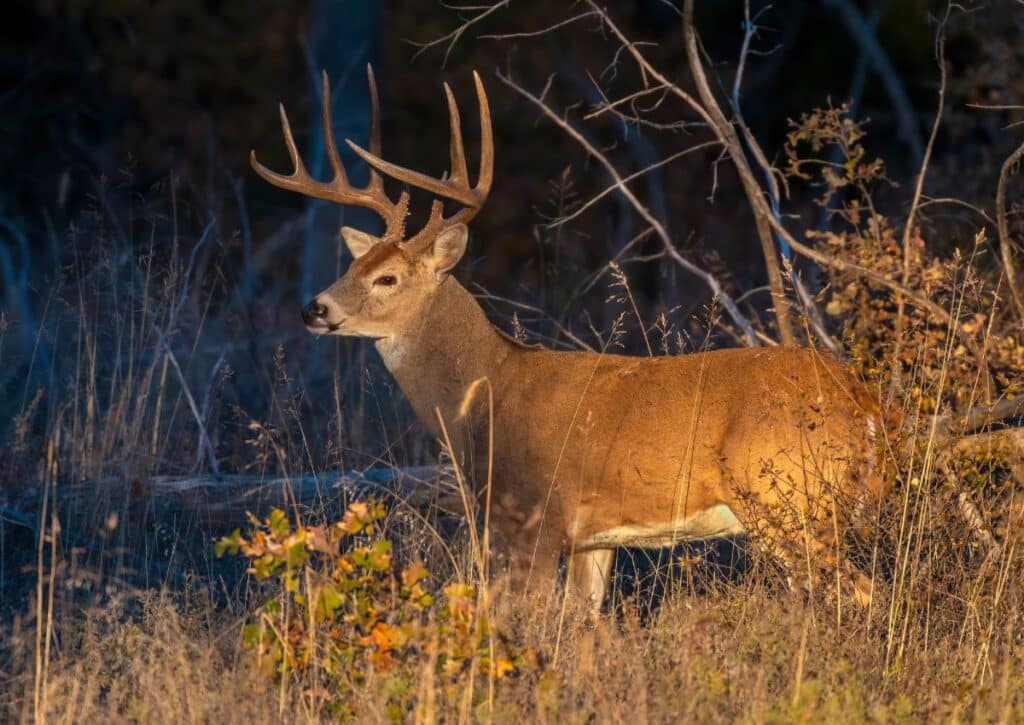
Early mornings and late afternoons are ideal times to observe these deer as they venture out to graze or access water sources. The park’s diverse landscape offers a mix of open meadows and dense forests, providing the perfect habitat for these deer.
One of the trails where they’re often spotted is the Cleetwood Cove Trail, a 2.2-mile round trip descending to the lake. Its adjacent meadows frequently host these animals, making it a favorite for wildlife enthusiasts.
Another location is the Sun Notch Trail, a shorter 0.8-mile loop offering both breathtaking park views and potential deer sightings. As with all wildlife encounters, it’s essential to maintain a respectful distance and refrain from feeding them.
Black Bear
Crater Lake National Park’s black bears are a robust sight, predominantly draped in a dense black coat, though variations of cinnamon and blonde occasionally break the norm. As omnivores, their meals swing between berries, nuts, and plants to the occasional indulgence in fish and small mammals.
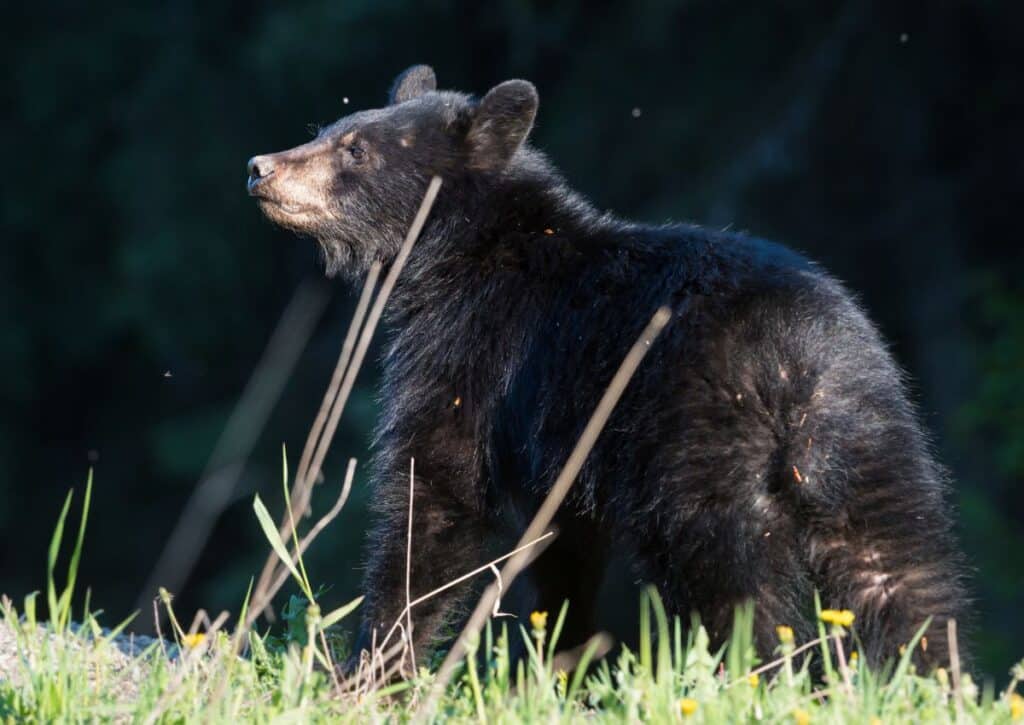
For those with a keen eye and a bit of luck, early mornings or late afternoons are the prime times for spotting these creatures in their natural foraging routines. Specific to the park, two trails frequently register bear activity. The Plaikni Falls Trail, a 2-mile round trip journey flanked by dense forests and murmuring streams, is a particular favorite, especially in areas bursting with berry patches.
Another notable mention is the Annie Creek Canyon Trail, a 1.7-mile loop weaving through vibrant meadows and dense woodlands, both of which are high on a black bear’s list of favored terrains.
It’s essential, amidst the thrill of a potential sighting, to prioritize safety. Ensure a respectable distance is maintained, abstain from feeding the animals, and when camping, secure food and scents diligently.
American Dippers
Distinctive for their slate-gray plumage and lively behavior, the American Dippers are a unique sight in Crater Lake National Park. These small birds, also known as “water ouzels,” have an affinity for clear, fast-moving streams.
Their diet primarily consists of aquatic insects, small fish, and larvae, which they deftly catch by diving and “walking” underwater, using their strong legs.
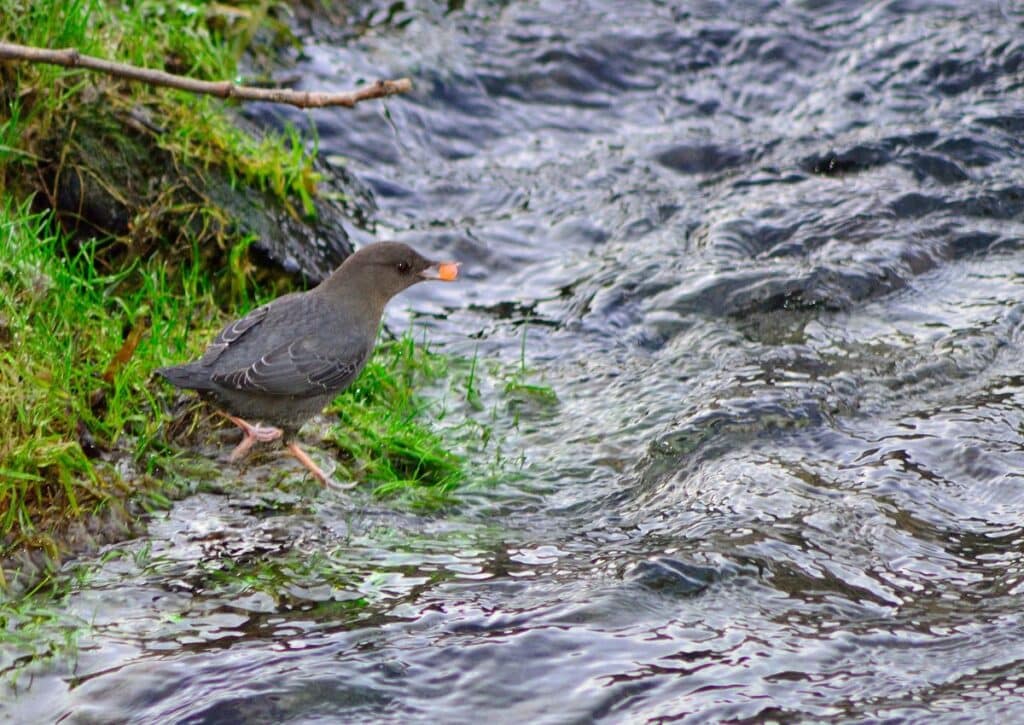
The best opportunity to observe these industrious birds is during the day when they’re actively feeding. Given their preference for fresh streams and waterfalls, certain areas in the park become prime spots for sightings.
Godfrey Glen Trail, a gentle 1-mile loop, provides serene views of cascading streams, a favorite for the dippers. Another hotspot is the area around Vidae Falls, where the rush of water often attracts these birds as they dive in search of a meal.
For those looking to observe the American Dipper, patience is key. Find a quiet spot near a stream and watch for their characteristic bobbing motion or listen for their melodious song. As always, minimize disturbances to ensure the birds can go about their routines undisturbed.
Peregrine Falcons
Recognized for their impressive speed and hunting prowess, Peregrine Falcons are a remarkable presence in Crater Lake National Park. These raptors possess a sleek, streamlined body, predominantly bluish-gray on the back with a lighter underbelly, and a distinct black “hood” around the head.
They are carnivores, feeding primarily on birds caught mid-flight, showcasing an aerial agility that’s unmatched.
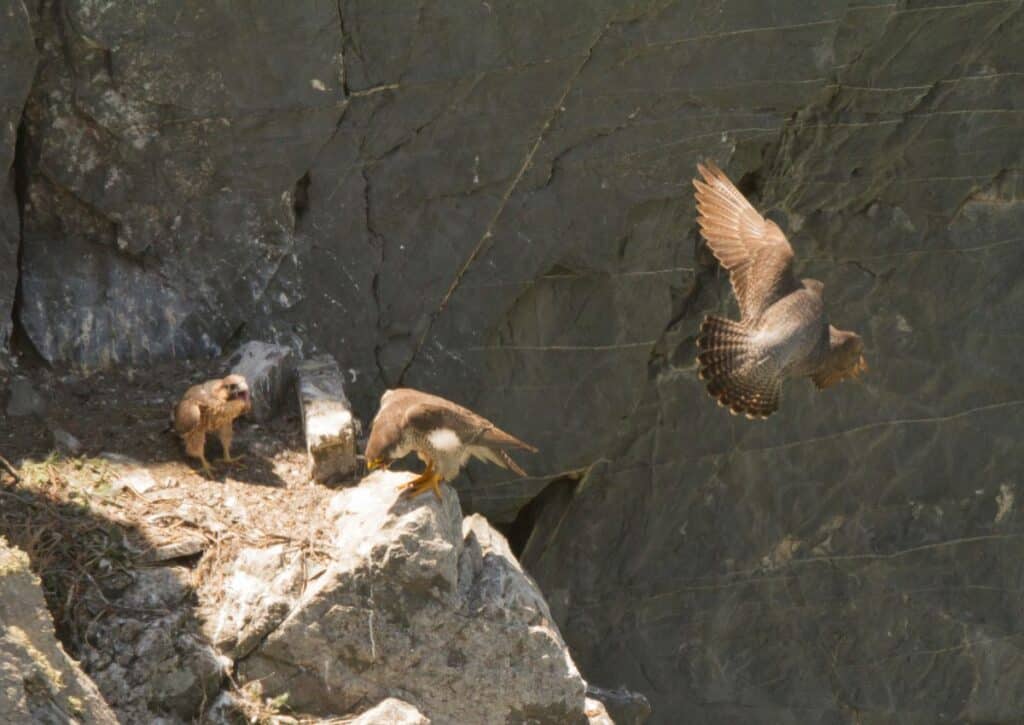
Spotting these falcons can be a thrilling experience, especially during their hunting dives, where they can reach speeds of over 200 mph. Given their preference for high vantage points, cliff faces and tall trees in the park serve as their favored perches and nesting sites.
Watchman Overlook, a popular viewpoint in the park, offers an elevated perspective that can be advantageous for sighting these raptors. Another notable location is Phantom Ship Overlook, where the rugged cliffs often become a resting spot for these birds.
If you’re keen on observing Peregrine Falcons, bring along binoculars for a clearer view. Their swift nature often requires a keen eye and patience. And as with all wildlife, it’s best to observe from a distance without causing any disturbances.
Mule Deer
The Mule Deer, named for their large, mule-like ears, are a delightful sight within the bounds of Crater Lake National Park. These deer exhibit a grayish-brown coat in winter, shifting to a tan hue during summer months.
The bucks are easily identifiable with their forked antlers that grow larger as they age. Primarily browsers, their diet includes a diverse range of plants, shrubs, and grasses, which varies with the seasons.
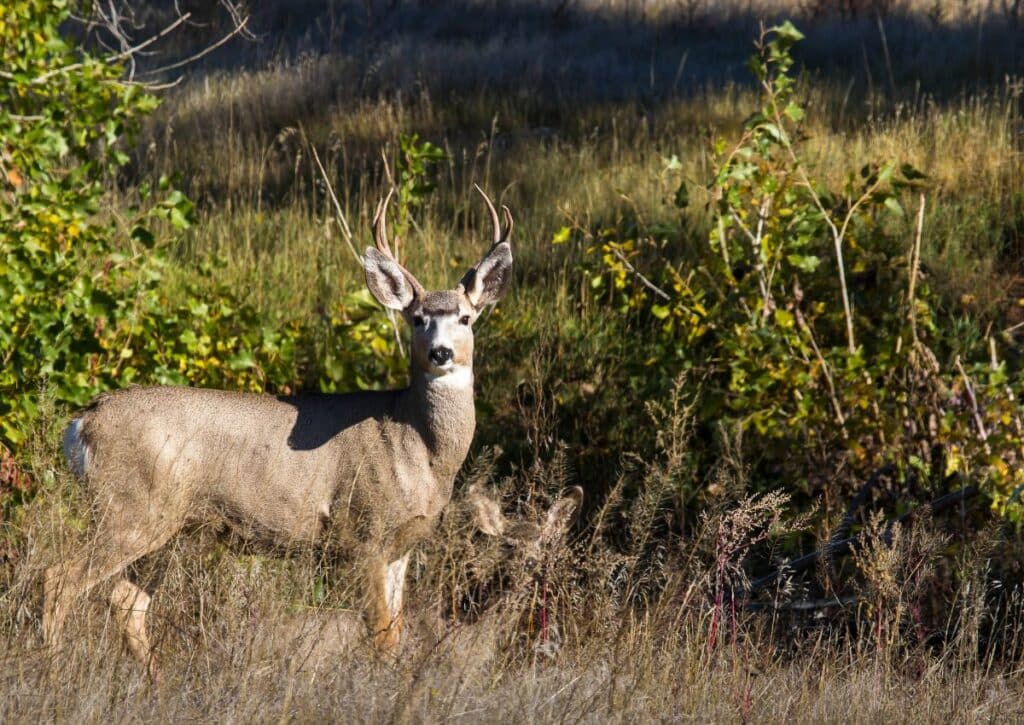
Early morning and late afternoon hours often see these deer actively foraging, making it the optimal time for visitors to catch a glimpse. Given the park’s diverse terrains, there are a couple of spots that stand out for Mule Deer sightings. Lost Creek Campground, with its blend of open spaces and shaded woodlands, frequently hosts these gentle creatures.
The Pinnacles Trail, a relatively flat 0.8-mile route, takes hikers through volcanic spires and is another location where these deer often graze or rest.
For those hoping to spot Mule Deer, a slow, quiet approach along the trails is recommended. Always maintain a safe distance, and it’s crucial to remember not to feed or disturb them.
Bald Eagles
The majestic Bald Eagles are a symbol of pride and a sight to behold within Crater Lake National Park. Characterized by their striking white head and tail contrasting with a dark brown body, these raptors command attention wherever they soar.
They primarily feed on fish, but will also consume birds, small mammals, and carrion when the opportunity presents itself.
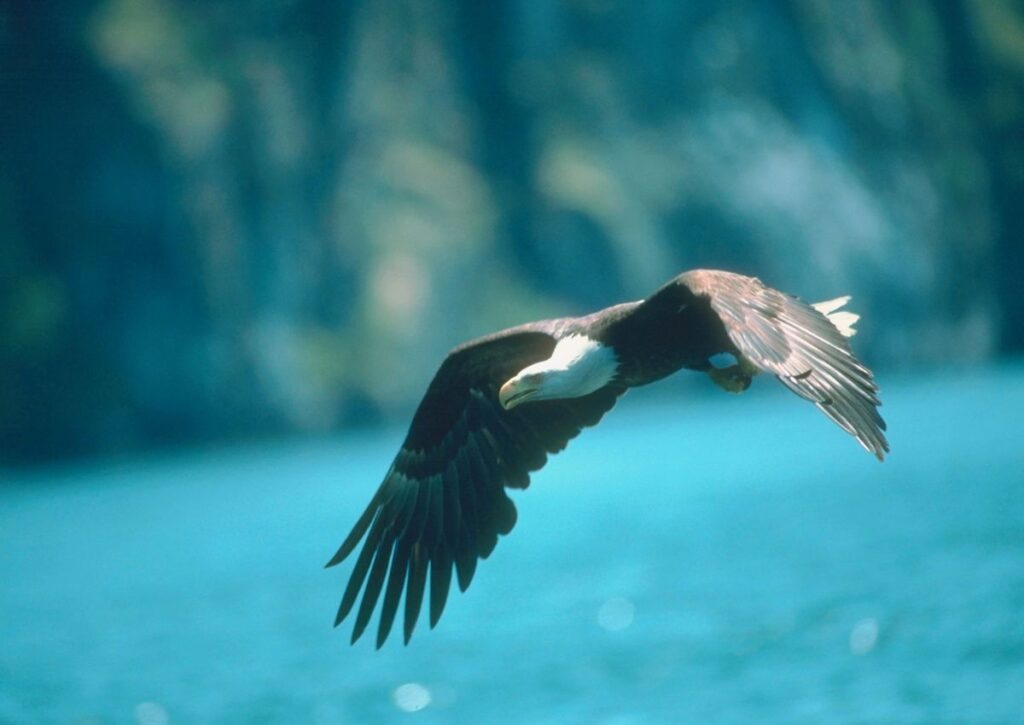
For the best chances to spot these magnificent birds, look towards the skies near large bodies of water where they often hunt or perch. In Crater Lake National Park, the vast, deep blue expanse of the lake itself is a prime spot.
The Discovery Point Trail, a 4-mile round trip with panoramic lake views, is a popular spot for eagle sightings, especially during mornings when the lake’s waters are calm.
Merriam Point, with its elevated view of the lake, is another excellent location to potentially see these birds soaring or resting atop tall pines.
When attempting to spot Bald Eagles, a pair of binoculars can be invaluable, given their often lofty perches. As with all wildlife in the park, it’s important to observe them respectfully from a distance, ensuring their natural behaviors remain undisturbed.
American Pika
The American Pika is a small, yet charismatic inhabitant of Crater Lake National Park. With rounded ears, bright eyes, and a compact body covered in grayish-brown fur, these little mammals often captivate visitors with their adorable appearance.
Residing in rocky alpine environments, pikas are herbivores, primarily feeding on a mix of grasses, mosses, and lichens.
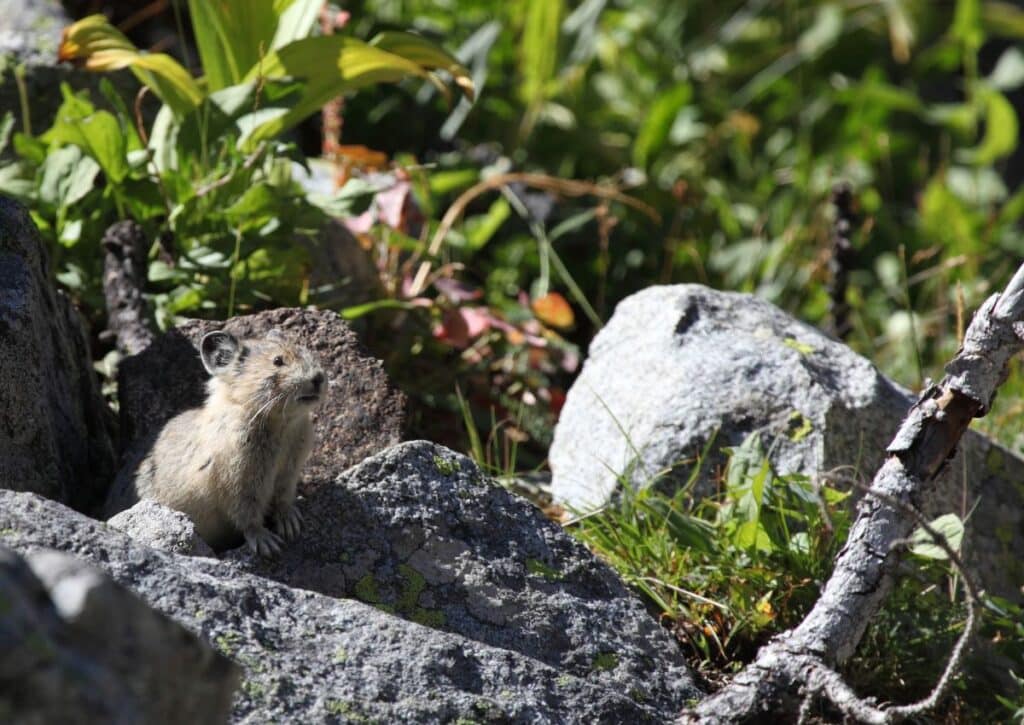
Their high-pitched calls can often be heard echoing among the rocks, signaling their presence. Given their preference for rocky terrains, certain areas in the park become ideal for spotting these elusive creatures.
Garfield Peak Trail, a 3.6-mile round trip that offers expansive park views, winds through rocky outcrops and talus slopes, making it a prime habitat for the pikas.
Additionally, the Mount Scott Trail, a 4.4-mile round trip ascending the park’s highest peak, traverses through areas where keen-eyed hikers might spot a pika darting between rocks or hear its distinctive call.
When searching for American Pikas, a patient approach is essential. Their small size and swift movements can make them a bit challenging to spot, but the reward of seeing these charming animals in their natural habitat is truly special. As always, it’s crucial to observe without disturbing their environment.
Bull Trout
The Bull Trout, with its sleek, elongated body and olive-green to blue-gray hue, is one of the unique aquatic residents of Crater Lake National Park. These fish are distinguishable by their pale yellow to crimson-colored spots and a lack of spots on their dorsal fins.
Being carnivorous, Bull Trout primarily feed on other fish, making them apex predators in their freshwater habitats.
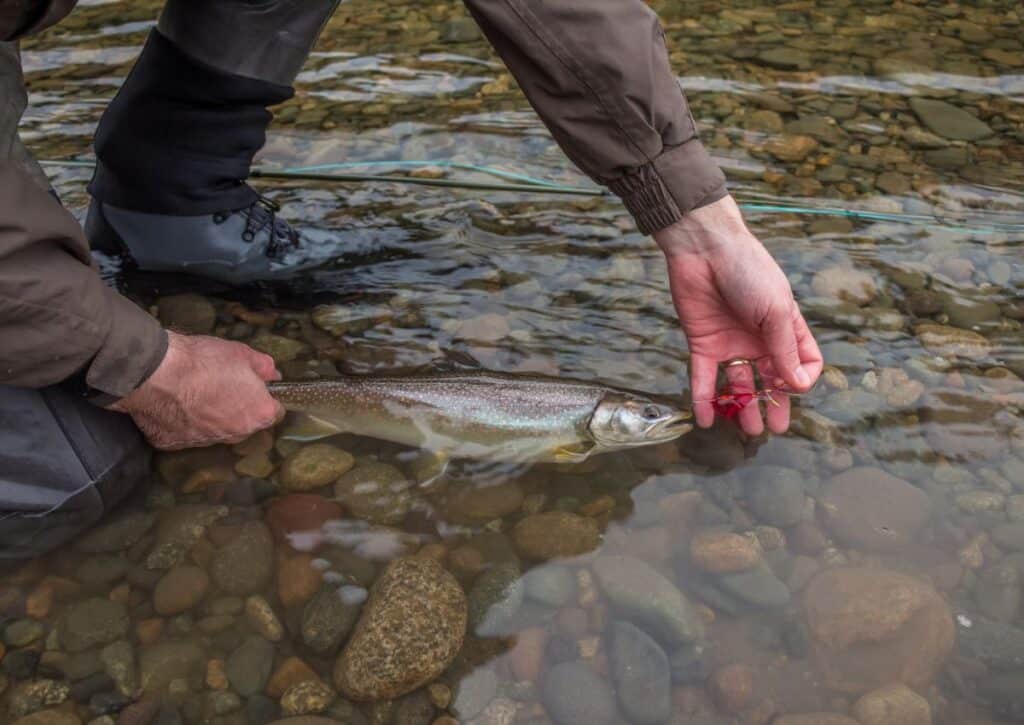
Crater Lake, with its deep and clear waters, provides an ideal environment for these fish. Although spotting them directly can be challenging due to the lake’s depth and clarity, keen anglers and wildlife enthusiasts often get a chance to observe them.
Areas like Cleetwood Cove, accessible via the 2.2-mile Cleetwood Cove Trail, offer an opportunity to access the lake’s shore where Bull Trout might be seen. The pristine waters around Wizard Island, the prominent cinder cone within the lake, are also known to be inhabited by these fish.
For those interested in observing or learning about Bull Trout, joining ranger-led programs can be beneficial. They often provide insights into the lake’s ecology and its aquatic inhabitants.
As always, it’s essential to follow all regulations and guidelines, especially if fishing, to ensure the continued survival and health of these unique fish in the park.
Snowshoe Hare
Snowshoe Hares are an enchanting sight in Crater Lake National Park. These medium-sized mammals sport a dense fur coat that undergoes a seasonal transformation: pure white in the winter to blend with the snow, and a brownish-gray in the warmer months to camouflage with the surrounding vegetation.
Their large hind feet, adapted for moving efficiently on snow, give them their name. Primarily herbivores, Snowshoe Hares feast on a variety of plants, including grasses, ferns, and shrubs, adapting their diet based on the season.
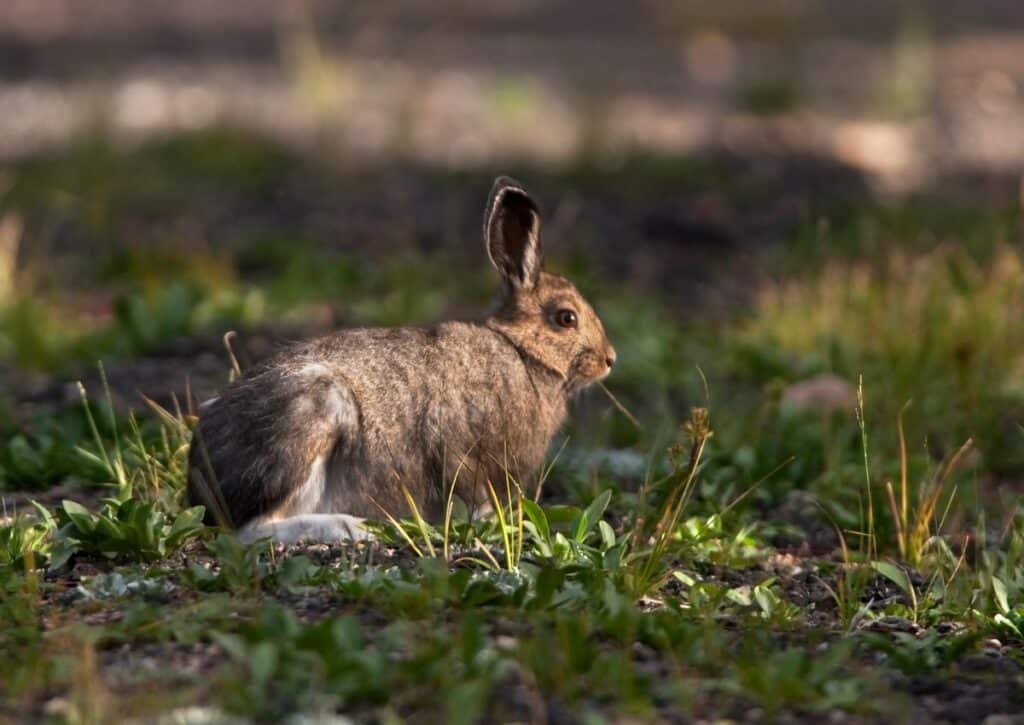
The best times to spot these elusive creatures are during dawn and dusk when they’re most active. In Crater Lake National Park, several areas offer a higher likelihood of hare sightings. The Mazama Campground, surrounded by dense forests, is one such place where these hares often forage.
Another spot is the Sun Notch Trail, a short 0.8-mile loop that takes hikers through meadows and forests, environments favored by the Snowshoe Hare.
If you’re on the lookout for these hares, treading quietly and patiently is key. Their natural camouflage can make them a bit tricky to spot initially, but once seen, their unique adaptations and behaviors are fascinating to observe. As with all wildlife, ensure minimal disturbance and let them go about their routines undisturbed.
Clark’s Nutcracker
Distinguished by its sharp, pointed bill and striking black and white plumage, the Clark’s Nutcracker is a prominent bird species within Crater Lake National Park. These birds possess a gray body contrasted with black wings and tail feathers, and a distinctive black patch around their eyes and throat.
Omnivorous in their eating habits, Clark’s Nutcrackers primarily feed on seeds, particularly from pine trees, but they’ll also consume insects and berries when available.
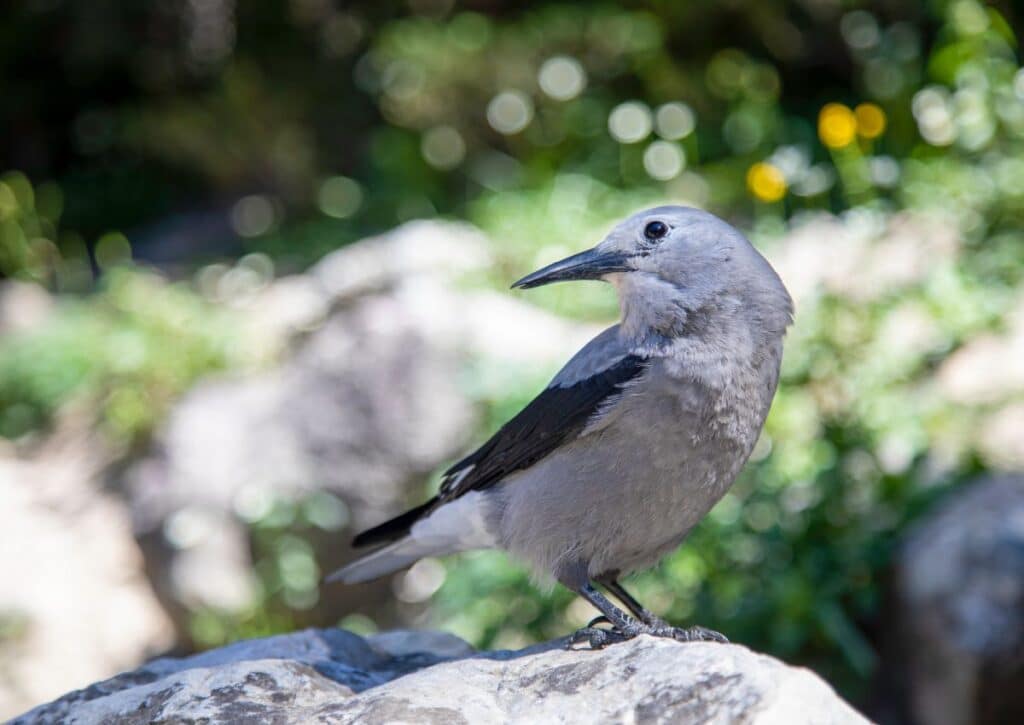
These birds are adept at hiding their food, caching thousands of seeds across vast areas, ensuring a food supply even during scarce times. For visitors hoping to observe them, higher elevations and pine-rich regions of the park offer the best chances.
The Rim Drive, a scenic route that encircles the lake, is a prime location to see these birds, especially around areas with dense stands of whitebark pines. Another favored spot is the Castle Crest Wildflower Trail, a 0.8-mile loop that meanders through diverse habitats, attracting various bird species, including the Clark’s Nutcracker.
When trying to spot these birds, listening can be as beneficial as looking. Their loud, raucous calls often echo through the forests, signaling their presence. As with other wildlife, always observe from a respectful distance and avoid any disturbances.
Yellow-Bellied Marmot
With their stout bodies, bushy tails, and the characteristic yellowish hue on their bellies, the Yellow-Bellied Marmots are captivating mammals often spotted in Crater Lake National Park.
These large ground squirrels are covered in a mix of brown, black, and gray fur, contrasting with their lighter underbellies. As herbivores, their diet primarily consists of green plants, grasses, and flowers, though they might occasionally munch on insects.
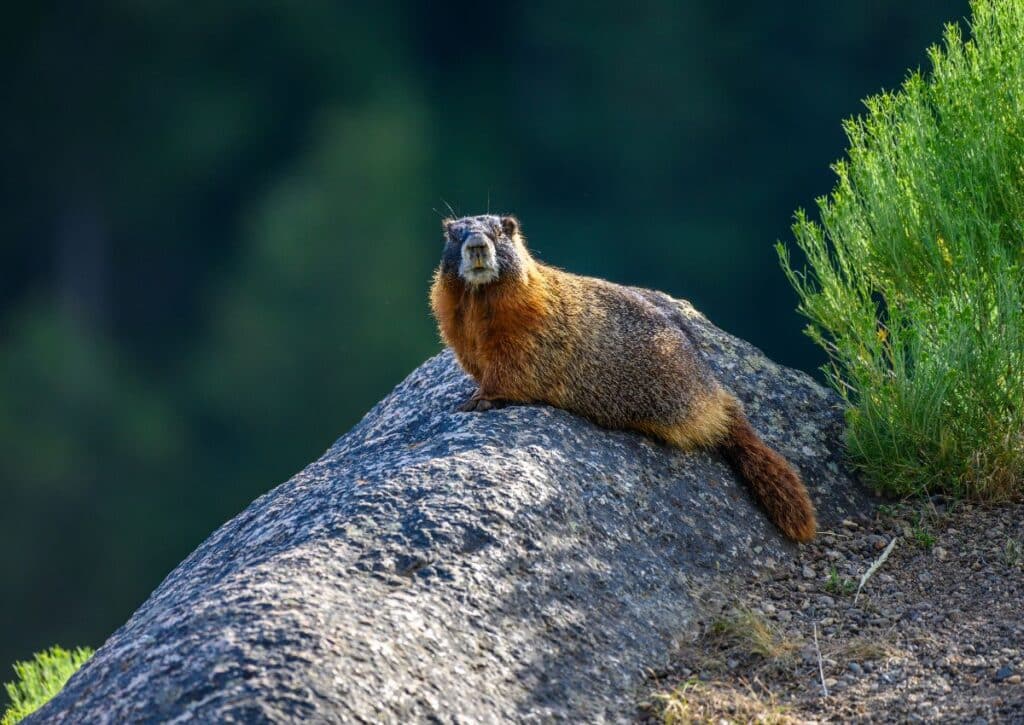
Being creatures that love the sun, they are often seen basking on rocks or logs during warmer hours. Rocky terrains with nearby meadows are their favored habitats. In the park, the Sun Notch Trail, which we previously mentioned for snowshoe hares, is also an excellent location to spot marmots, given its blend of open spaces and rocky outcrops.
The Crater Peak Trail, a 6.6-mile round trip leading to an overlook, meanders through habitats frequented by these marmots.
For those keen to see Yellow-Bellied Marmots in action, patience and a keen eye are essential. Look out for their burrows or listen for their sharp whistle-like calls, especially when they’re alerting others of potential threats.
As always, while observing, ensure you maintain a respectable distance to keep both you and the marmots safe.
American Marten
The American Marten, with its sleek body, pointed face, and bushy tail, is one of the more elusive mammals of Crater Lake National Park. These small carnivores exhibit a rich brown fur coat, often highlighted with golden or orange tones on their throats and chests.
As part of their diet, they primarily feed on small mammals, birds, and insects, showcasing their agile hunting prowess.
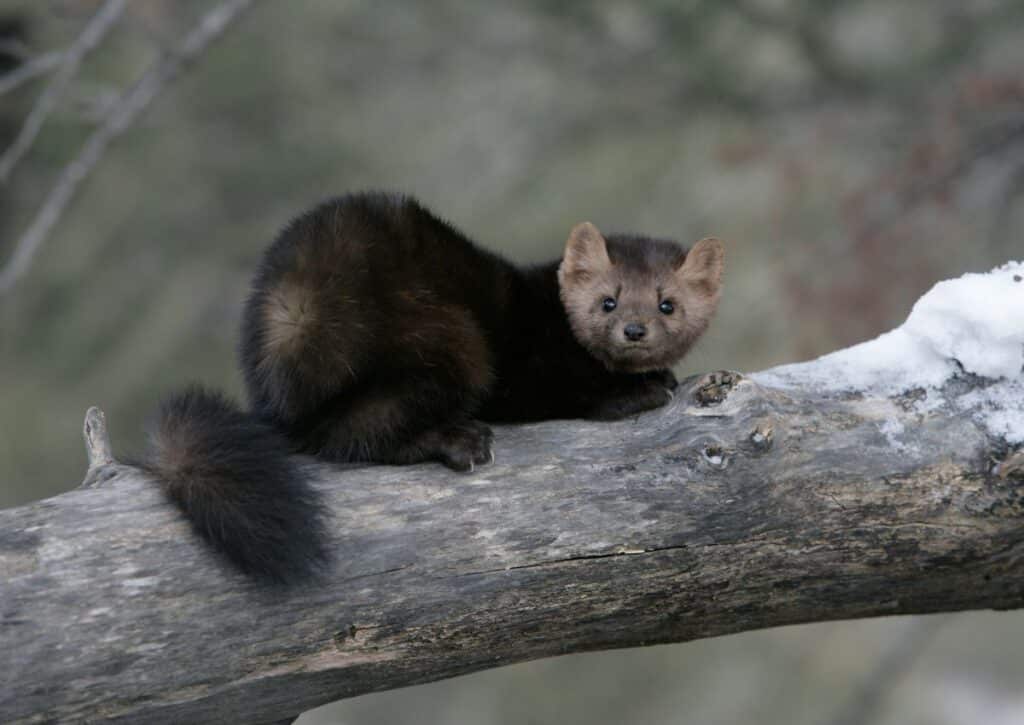
Dense, wooded areas in the park are the prime habitats for these martens. The Annie Creek Canyon Trail, a 1.7-mile loop that winds through old-growth forests and alongside the scenic creek, is one potential area to spot these creatures. Another location to consider is the Godfrey Glen Trail, a gentle 1-mile loop that takes visitors through habitats preferred by the American Marten.
Given the elusive nature of these animals, spotting them requires patience and a bit of luck. Listen for their soft vocalizations, which can sometimes give away their presence.
If you do come across one, it’s essential to observe from a distance, ensuring their natural behavior remains undisturbed. The sight of an American Marten in its natural environment is a rare and rewarding experience for any wildlife enthusiast.
Porcupine
The Porcupine, easily recognized by its coat of sharp quills, is a nocturnal herbivore often found within the dense forests of Crater Lake National Park. These slow-moving creatures have a stout, rounded body covered in a combination of soft hair and long quills, which serve as their primary defense against predators.
Porcupines are mostly herbivorous, feeding on leaves, twigs, and the inner bark of trees, especially during winter months.
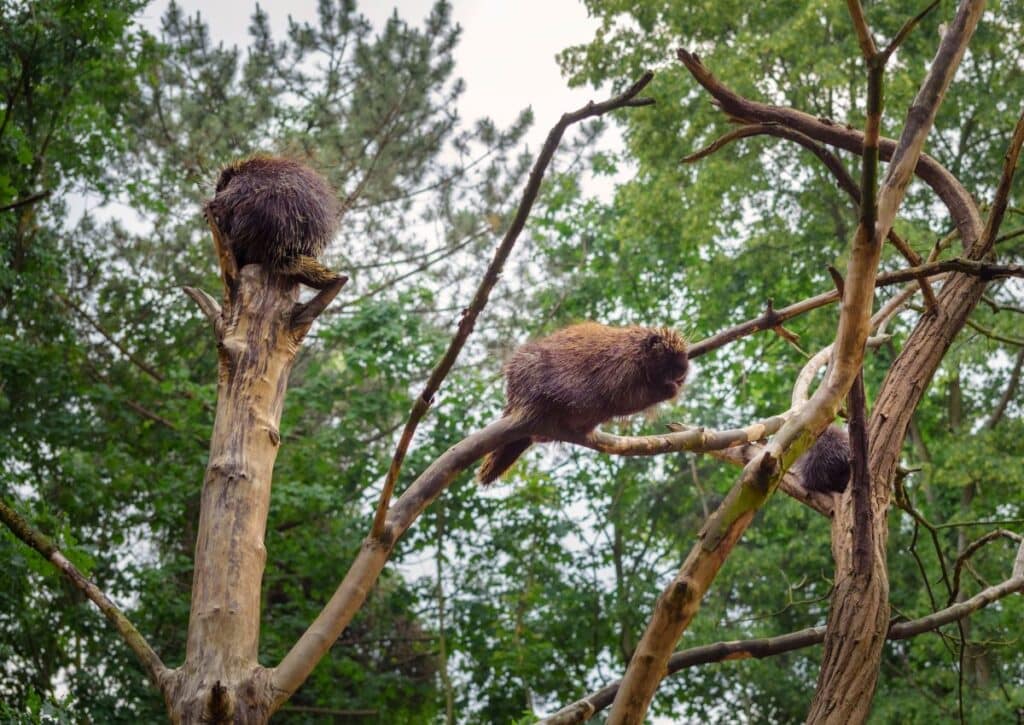
For those hoping to encounter a porcupine in the park, dense wooded areas are the prime spots. The Plaikni Falls Trail, a 2-mile round trip through ancient forests leading to a picturesque waterfall, offers potential sightings, especially during the quieter evening hours.
Another noteworthy trail is the Lady of the Woods Loop, a 0.9-mile loop that meanders through dense stands of pines and firs, environments favored by these prickly mammals.
If you’re venturing out in search of a porcupine, tread softly and keep your eyes peeled for their distinctive silhouette up in the trees or on the ground. While they are generally non-aggressive, it’s essential to keep a safe distance and never provoke them. The experience of observing a porcupine in its natural setting adds a unique touch to any visit to Crater Lake National Park.
Wildlife Abundant Trails in Crater Lake National Park
Crater Lake National Park is not just renowned for its awe-inspiring, deep blue lake, but also for the rich tapestry of wildlife that resides within its confines.
While the park spans varied terrains from dense forests to meadows and rocky cliffs, some trails stand out as particularly bountiful when it comes to wildlife sightings.
Here, we highlight a few of those trails, providing visitors with the best chances to encounter the park’s diverse inhabitants.
- Discovery Point Trail
- Scenery: This trail boasts panoramic views of Crater Lake itself, unfolding the story of the region’s volcanic history with every step. The trail meanders along the rim of the lake, offering multiple vantage points to absorb the expansive blue vista, with Wizard Island standing proudly in the distance.
- Difficulty: Moderate. While only 4 miles round trip, there are some elevation changes that could challenge beginners.
- Wildlife: Bald eagles often soar above, while mule deer can be spotted grazing nearby.
- Sun Notch Trail
- Scenery: A short loop that takes hikers through meadows bursting with wildflowers and dense forests, culminating in a viewpoint overlooking the Phantom Ship rock formation.
- Difficulty: Easy. At just 0.8 miles, it’s a quick loop, but the view at the end is well worth the journey.
- Wildlife: Both snowshoe hares and yellow-bellied marmots have been spotted frequently along this trail, especially in the early morning or late afternoon.
- Annie Creek Canyon Trail
- Scenery: The trail winds through an impressive canyon with old-growth forests flanking a bubbling creek. There are points along the trail where the creek’s melody harmonizes with the rustling of leaves, creating a serene ambiance.
- Difficulty: Moderate. The 1.7-mile loop has some steep sections, but they’re well-compensated by the lush scenery.
- Wildlife: The dense woods here are a haven for the American marten, while the creek often attracts various bird species.
- Garfield Peak Trail
- Scenery: As one ascends, the trail provides breathtaking panoramic views of Crater Lake and the surrounding landscapes. The horizon stretches out, dotted with peaks and valleys, under the vast expanse of the sky.
- Difficulty: Challenging. The 3.6-mile round trip can be strenuous due to its steep ascent, but the views at the peak make it a favorite among many.
- Wildlife: American pikas are often seen (or heard) among the rocky outcrops, their shrill calls echoing in the cool mountain air.
- Cleetwood Cove Trail
- Scenery: This is the only trail that descends to the shore of Crater Lake. Hikers are treated to unique perspectives of the lake’s sheer depth and clarity, surrounded by towering cliffs.
- Difficulty: Moderately challenging. The trail is 2.2 miles round trip, but the return hike is uphill and can be demanding.
- Wildlife: Bull trout inhabit the lake’s pristine waters, and with some luck, visitors might catch a glimpse of them swimming near the shore.
- Godfrey Glen Trail
- Scenery: A tranquil loop through dense stands of conifers and periodic meadows. The trail provides a more intimate experience with the park’s flora, with occasional openings offering views of the surrounding landscapes.
- Difficulty: Easy. The trail spans a gentle 1-mile loop, making it accessible for most.
- Wildlife: Porcupines and black bears have been known to frequent the areas around this trail, especially during the quieter times of the day.
Whether you’re an avid wildlife enthusiast or a casual hiker, these trails promise a chance to connect with nature in its purest form. Always remember to respect the wildlife, maintaining a safe distance, and leaving no trace, ensuring these creatures continue to thrive in their natural habitats for generations to come.
Wildlife Viewing Tips in Crater Lake National Park
Crater Lake National Park is a treasure trove for nature enthusiasts, offering opportunities to witness wildlife in its natural habitat. However, to maximize these encounters and ensure safety, there are some essential tips visitors should keep in mind:
- Best Times of Day for Wildlife Viewing:
- Early Morning & Dusk: Many animals, including deer, elk, and bears, are crepuscular, meaning they’re most active during the early morning and late evening hours. Setting out during these times can increase your chances of sightings.
- Midday: While many larger animals may be resting, this is a good time to spot birds, squirrels, and other smaller creatures.
- Best Times of the Year for Wildlife Viewing:
- Spring: As the park begins to thaw, animals emerge in search of food, making spring a lively season for wildlife viewing.
- Summer: The warmer months see an influx of bird species and increased activity among mammals.
- Autumn: As animals prepare for the winter, there’s a flurry of activity, especially among larger mammals.
- Winter: While this season is quieter, it’s a unique time to spot creatures like the snowshoe hare against the snowy backdrop.
- Safety First:
- Maintain Distance: When encountering larger wildlife such as bears or mountain lions, it’s crucial to keep a safe distance, ideally at least 100 yards for bears and 50 yards for other large animals. This ensures both your safety and that of the animal.
- Carry Bear Spray: Especially if hiking in remote areas, it’s advisable to carry bear spray and know how to use it. While encounters are rare, it’s always best to be prepared.
- Stay Alert & Make Noise: When hiking, make occasional noise to alert animals of your presence. This can prevent surprising them, which is often the cause of defensive behavior.
- Avoid Hiking Alone: Particularly in the more secluded parts of the park, hiking in groups can deter wildlife from approaching.
- Preserving the Natural Balance:
- Never Feed the Wildlife: It’s essential to resist the urge to feed any animals you encounter. Feeding can lead to unhealthy diets, make them reliant on humans for food, and increase the chances of human-animal conflicts.
- Store Food Properly: When camping or picnicking, always ensure that your food is stored securely and out of reach from wildlife. This not only protects your supplies but also keeps animals from associating humans with food.
- Be Respectful:
- Observe Silently: When you spot wildlife, remain quiet and still. Sudden movements or loud noises can stress animals.
- Use Binoculars or Zoom Lenses: To get a closer look without approaching, it’s beneficial to carry binoculars or a camera with a zoom lens.
While the allure of witnessing wildlife in its natural setting is thrilling, it’s paramount to prioritize safety and respect. Remember, Crater Lake National Park is their home, and as visitors, it’s our responsibility to ensure that our actions preserve and protect their natural behaviors and habitats.
Conclusion
Crater Lake National Park offers a mesmerizing blend of natural beauty and rich biodiversity. As we journey through its trails and terrains, the park reveals its many facets, from the deep blue waters of the lake to the myriad wildlife species that inhabit its forests and meadows.
But, as with any wilderness experience, the true essence lies not just in seeing but in understanding and coexisting. By respecting the park’s rules, prioritizing safety, and fostering a deep appreciation for the natural world, we can ensure that this jewel remains pristine for future generations.
Whether you’re setting foot in Crater Lake for the first time or are a seasoned visitor, the park never ceases to inspire wonder and awe. Here’s to countless more adventures in this extraordinary landscape, where every trail leads to a new discovery, and every encounter reminds us of the delicate balance of nature. Safe travels and happy wildlife watching!

